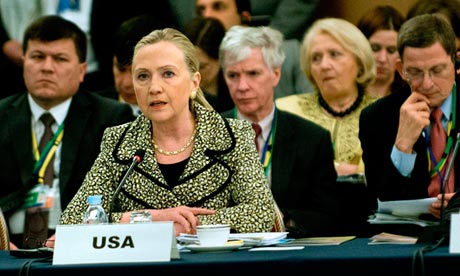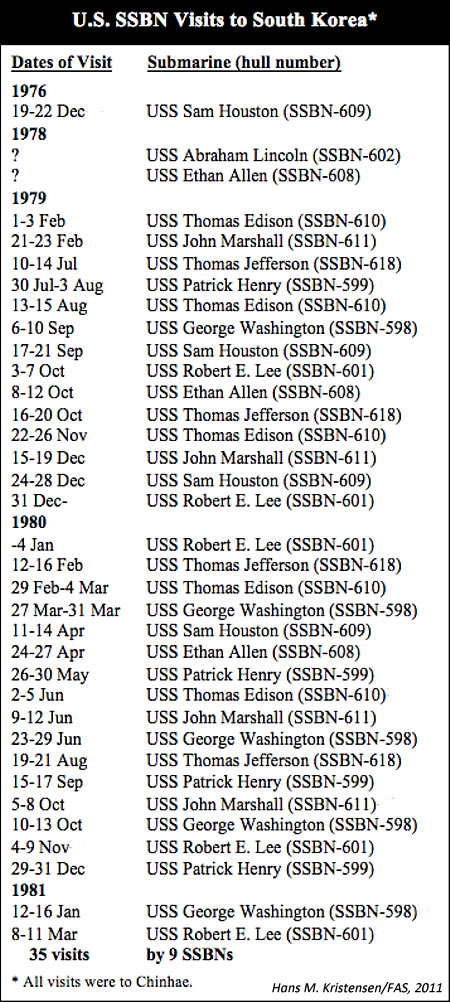How Many Civilians Are Killed by U.S. Drones?
by Micah Zenko
June 4, 2012
An undated U.S. Air Force photograph of a surveillance RQ-4 Global Hawk (Handout/Courtesy Reuters).
After last week’s excellent reporting in Newsweek and the New York Times, many pundits and policymakers are newly aware of America’s policy of targeted killings and the existence of “kill lists.”
This recent surge in interest and awareness in targeted killings is a particularly sad commentary on the lack of interest in foreign affairs—or at least where U.S. bombs are currently falling—since George W. Bush first authorized targeted killings on September 17, 2001.
The first such killing outside of a combat zone took place in Yemen on November 3, 2002, and the existence of multiple kill lists across the U.S. government has been known—albeit with important information gaps—for years.
Even if some have just learned of America’s escalating use of lethal force against suspected terrorists or militants a decade after the program began, any public interest and debate is welcomed.
The passage from the New York Times that received the most attention describes that, according to the Obama administration’s methodology, there are inherently few civilian casualties as a result of the “signature strikes” against unnamed people:
It in effect counts all military-age males in a strike zone as combatants, according to several administration officials, unless there is explicit intelligence posthumously proving them innocent.
Counterterrorism officials insist this approach is one of simple logic: people in an area of known terrorist activity, or found with a top Qaeda operative, are probably up to no good.
This is not a new story. President Obama simply expanded on a policy initiated by his predecessor, but with more drones at his disposal (there were thirty-four drone combat air patrols [CAPs] when he came into office, now there are fifty-seven) and an even longer list of targets.
As a former senior counterterrorism official remarked this weekend regarding signature strikes in Yemen, the “elasticity” of what the Obama administration considers a “direct threat” to the United States “has grown over time.”
Another former senior official clarified, “There was a little liberalization that went on in the kill lists that allowed us to go after” Yemeni militants opposing the regime in Sana’a, rather than specifically the United States.
The use of signature drone strikes was first revealed in a February 22, 2008, New York Times article by Eric Schmitt and David Sanger. The journalists reported President Bush’s decision to authorize:
A significant relaxation of the rules under which American forces could aim attacks at suspected Qaeda and Taliban fighters…Instead of having to confirm the identity of a suspected militant leader before attacking, this shift allowed American operators to strike convoys of vehicles that bear the characteristics of Qaeda or Taliban leaders on the run, for instance, so long as the risk of civilian casualties is judged to be low.
It is impossible to know with any certainty how many civilians—or noncombatants—have been killed by such attacks due to their “covert” nature, lack of timely access to remote villages, and the inherent biases of the U.S. government, targeted terrorist organizations, and host governments.
Estimates by nongovernmental experts vary widely: in April 2009, Pakistani terrorism researcher Amir Mir claimed that civilians constituted 98.14 percent of all deaths from CIA drone strikes in Pakistan, while Georgetown University professor Christine Fair stated, “Actually the drones are not killing innocent civilians.”
Estimates from anonymous Obama administration officials about many civilian casualties provide little clarity. In April 2009, a U.S. official claimed that “more than 400” enemy fighters in Pakistan had been killed by drone strikes: “We believe the number of civilian casualties is just over 20, and those were people who were either at the side of major terrorists or were at facilities used by terrorists.”
In addition, in May 2010 a U.S. counterterrorism official stated: “We believe the number of noncombatant casualties is under 30, those being people who were near terrorist targets, while the total for militants taken off the battlefield exceeds 500.” In August 2011, ABC News reported, “[A senior U.S. official] said that while the U.S. agrees around 2,000 suspected militants have been killed, the total civilian casualties are closer to 50.”
If the number of civilian casualties increased by ten, while the amount of suspected militants killed increased by only one hundred, it is implausible that only twenty additional civilians were killed while the next 1,500 militants lost their lives.
In Afghanistan, where American and international forces enjoy significantly greater intelligence and situational awareness from villagers on the ground and surveillance aircraft overhead than in Pakistan, Predator drones have mistakenly killed civilians on several occasions, including twenty-three deaths in a February 2010 incident—as well as U.S. Marine Staff Sgt. Jeremy D. Smith and Naval reservist Benjamin D. Rast in April 2011, the first U.S. servicemembers killed by an American drone.
In June 2011, White House senior counterterrorism adviser John Brennan affirmed: “There hasn’t been a single collateral death because of the exceptional proficiency, precision of the capabilities we’ve been able to develop.”
Brennan later provided a statement to the Times that “adjusted the wording of his earlier comment,” according to the article: “Fortunately, for more than a year, due to our discretion and precision, the U.S. government has not found credible evidence of collateral deaths resulting from U.S. counterterrorism operations outside of Afghanistan or Iraq, and we will continue to do our best to keep it that way.”
Brennan did not explain what is considered “credible evidence,” but that same week an anonymous U.S. official echoed his assertion, declaring, “We can’t confirm any noncombatant casualties.”
In April 2012, when asked to clarify his assessment of civilian casualties, Brennan replied: “What I said was that over a period of time before my public remarks that we had no information about a single civilian, a noncombatant being killed.”
He did acknowledge that “Unfortunately, in war, there are casualties, including among the civilian population,” and “sometimes you have to take life to save lives.” In one fell swoop, the standard for counting civilian casualties slid from “credible evidence” to “no information.”
During roughly the same time period, several research organizations estimated the following civilian deaths from CIA drone strikes in Pakistan alone (such assessments exclude civilians killed in Yemen from U.S. attacks):
Given that there is plenty of information—with varying degrees of credibility—about civilians killed in U.S. counterterrorism operations, it is safe to assume that Brennan has either ignored such research or purposefully misled the American public.
In response to the Newsweek and Times reporting last week, the White House spokesperson said, “I am not going to get into the specifics of the process” and “I don’t have the assessments of civilian casualties…we make great efforts to reduce the risk of civilian casualties.”
That same day, the Pentagon spokesperson told reporters, “Specifics I can’t get into…I can assure you that the number of civilian casualties is very, very low,” and “we’re very confident that the number is very low.” In other words, the Obama administration is maintaining its “trust us” position on targeted killings, without providing any supporting evidence to reinforce that trust.
In March, after Army Staff Sgt. Robert Bales allegedly massacred sixteen men and women in southern Afghanistan, President Obama gave a heartfelt statement about the tragedy: “The United States takes this as seriously as if it was our own citizens and our own children who were murdered. We’re heartbroken over the loss of innocent life.
The killing of innocent civilians is outrageous and it’s unacceptable. It’s not who we are as a country.” This sentiment should extend beyond civilians killed by U.S. ground forces to those that result from highly precise airstrikes.
Of course, the targeted killings policy initiated by President Bush and expanded by President Obama differs from a horrific and willful massacre of innocents. There is reportedly an exhaustive interagency process with multiple levels of review by officials and staff that attempts to minimize the number of civilian casualties from U.S. counterterrorism operations.
However, if the methodology for determining targets includes not only those who appear on vetted kill lists, but also anonymous individuals nearby, then citizens should be deeply skeptical of any numerical estimates or soothing adjectives provided by the Obama administration.
Source: blogs.cfr.org
oldmarine









